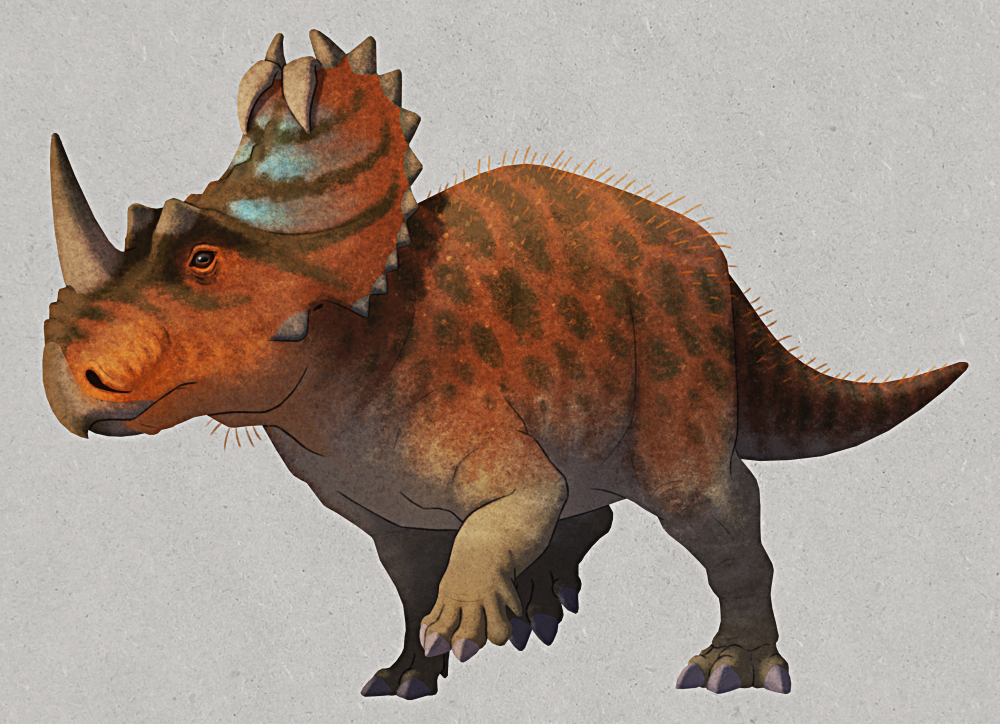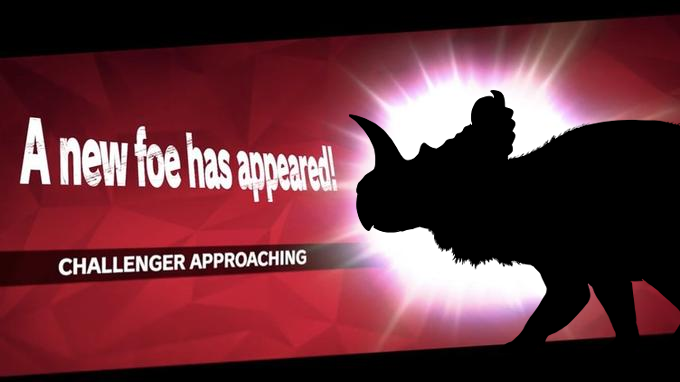The first fossil remains of Monoclonius crassus were discovered in the Late Cretaceous Judith River fossil beds (~75 million years old) in 1876 in Montana, USA. It was one of the many dinosaur species hurriedly named as part of the Bone Wars, and was described based on a mixture of bones from several different sites.
At first much of this dinosaur’s anatomy was poorly understood, and at first it was misidentified as a hadrosaur. The skull remains were fragmentary and ceratopsians hadn’t yet been identified as a group, so Monoclonius‘ horns weren’t even recognized as being horns and a piece of the frill was initially misinterpreted as part of a breastbone.
Once the much better-preserved Triceratops was discovered in 1889, and the existence of ceratopsians was recognized, Monoclonius was re-examined and identified as a similar dinosaur – and three more species were quickly described within the genus, also based on very fragmentary fossils.

Then for a while afterwards every ceratopsid fossil that wasn’t clearly a Triceratops was then just dumped into Monoclonius, quickly turning the genus into a wastebasket full of dubious indistinct remains.
But then…

Centrosaurus apertus was named in 1904, from the similarly-aged Dinosaur Park Formation in southern Alberta, Canada. It had originally been one of the various species of Monoclonius, but was now claimed to be different enough to deserve its own separate genus name – and this started a decades-long controversy between several paleontologists.
Over the new few decades arguments went back and forth over whether Centrosaurus was actually valid or if it was just a junior synonym of Monoclonius. As more and better ceratopsid fossil material was discovered several other Monoclonius species were eventually split off into their own separate genera, too, creating Styracosaurus, Chasmosaurus, and the somewhat dubious Brachyceratops. But other new species also continued to be lumped into Monoclonius up until 1990, meaning that over its century of existence this wastebasket taxon had at one point or another contained at least 16 different species.
During the 1990s opinion began to turn against Monoclonius, increasingly regarding it as a dubious name. Its original type specimen was a chimera of multiple different individuals (and possibly multiple different species), and it just didn’t have any distinct enough anatomical features to distinguish it from other ceratopsids.
Centrosaurus, meanwhile, was further validated by the discovery of huge bonebeds containing thousands of individuals, making it into one of the best-known of all ceratopsians.
Today Monoclonius‘ name remains attached to a few fossil specimens, but only the ones that are too indistinct to classify as anything else. Some “Monoclonius” have also turned out to actually be juveniles and subadults of other ceratopsians – it seems many young centrosaurines had a Monoclonius-like stage in their growth, before they went on to develop their own species’ distinctive horn and frill shapes.
So Monoclonius may never have been a distinct genus at all – it was just a bunch of different ceratopsian teenagers!
